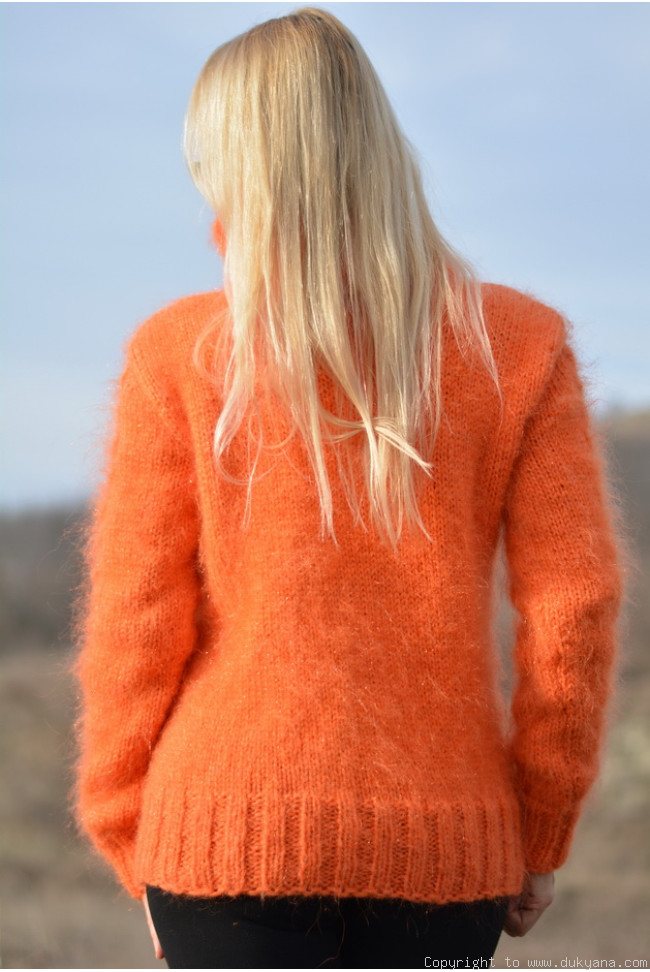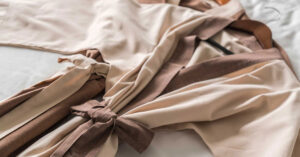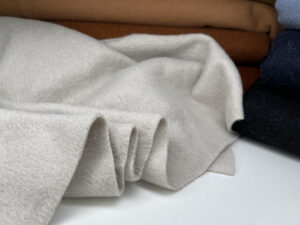Orange Cotton vs. Orange Mohair: Can These Fabrics Mix?

Fabric compatibility is crucial in fashion and sewing, impacting the final look and feel of garments. Today, we’ll explore whether orange cotton and orange mohair can be combined effectively. You’ll learn about their compatibility, benefits, challenges, and tips for sewing and maintaining these materials.
Compatibility Analysis
Compatibility Verdict: YES, with Considerations
Orange cotton and orange mohair can be used together, but they require careful handling. Cotton is a versatile, breathable fabric, while mohair, derived from the Angora goat, is known for its luxurious texture and warmth. Here’s why they can work together:
- Texture and Weight: Cotton is smooth and lightweight, whereas mohair is fluffy and medium-weight. Their textural contrast can add visual interest.
- Stretch and Elasticity: Cotton has minimal stretch, while mohair can be slightly elastic. This difference needs consideration in garment construction.
- Care Requirements: Cotton is generally easy to care for, but mohair requires gentle handling to maintain its softness and prevent felting.
- Durability: Both fabrics are durable, but mohair’s fibers can be delicate, requiring mindful sewing techniques.
Fabric Properties Comparison Table
| Property | Orange Cotton | Orange Mohair |
|---|---|---|
| Fiber Content | Natural (cotton plant) | Natural (Angora goat) |
| Weight and Thickness | Lightweight | Medium-weight |
| Breathability | High | Moderate |
| Moisture-wicking | Moderate | High |
| Stretch and Elasticity | Low | Moderate |
| Wrinkle Resistance | Moderate | High |
| Care Instructions | Machine wash, iron | Hand wash, dry flat |
| Durability | High | Moderate |
Benefits of Mixing These Fabrics
Combining orange cotton with orange mohair can yield several benefits:
- Enhanced Texture: The smoothness of cotton complements the fluffiness of mohair, creating a rich, tactile fabric.
- Improved Comfort: Cotton’s breathability and mohair’s warmth make for a comfortable garment suitable for various climates.
- Better Drape: Cotton’s structure supports mohair’s natural drape, enhancing movement and flow.
- Cost-effectiveness: Pairing an affordable fabric like cotton with luxurious mohair can reduce overall material costs.
- Seasonal Versatility: This blend is suitable for transitional seasons, offering warmth without overheating.
- Design Possibilities: The contrast in texture and weight allows for creative design opportunities, from statement pieces to subtle accents.
Potential Challenges
Despite their benefits, mixing these fabrics can present challenges:
- Different Shrinkage Rates: Pre-wash both fabrics to minimize shrinkage discrepancies.
- Conflicting Care Requirements: Opt for hand washing or gentle cycles to accommodate both fabrics.
- Texture Clash or Pilling: Use a fabric shaver to manage pilling on mohair.
- Seam Puckering: Employ stabilizers to prevent puckering at seams.
- Color Bleeding or Fading: Test for colorfastness before combining.
Sewing & Styling Tips
To successfully sew and style these fabrics, consider the following:
- Sewing Techniques: Use a ballpoint needle for cotton and a sharp needle for mohair. Test stitches on scraps.
- Needle and Thread: Opt for polyester thread for elasticity and strength.
- Interfacing and Stabilizer: Use lightweight interfacing to support seams and prevent stretching.
- Seam Finishing: French seams or serged edges can provide a neat finish.
- Pattern Selection: Choose patterns that highlight the contrast in texture and drape.
- Styling Ideas: Use this blend for cozy sweaters, stylish scarves, or unique home decor accents like cushion covers.
Care & Maintenance Guide
Proper care ensures longevity for your cotton-mohair blend:
- Washing Instructions: Hand wash or use a gentle cycle with cold water.
- Drying Recommendations: Lay flat to dry, reshaping while damp to maintain form.
- Ironing and Steaming: Use a low heat setting on cotton areas; avoid direct heat on mohair.
- Stain Removal: Treat stains promptly with mild detergent.
- Long-term Care: Store garments folded to prevent stretching, and avoid prolonged exposure to sunlight.
FAQ Section
-
Can you wash cotton and mohair together?
- Yes, but use a gentle cycle and cold water to protect both fabrics.
-
Will cotton shrink more than mohair?
- Cotton may shrink more; pre-wash both fabrics to minimize this issue.
-
What needle size should I use for sewing these fabrics together?
- Use a size 75/11 ballpoint needle for cotton and a size 80/12 sharp needle for mohair.
-
Can you mix cotton and mohair in one garment?
- Yes, they can be combined effectively with the right techniques.
-
How do you prevent seam puckering when combining these fabrics?
- Use stabilizers and test stitches on fabric scraps.
-
Is it okay to mix cotton and mohair for upholstery?
- Yes, but ensure the fabric is reinforced for durability.
-
What’s the best way to finish seams with these fabrics?
- French seams or serged edges work well for a clean finish.
By understanding these fabrics’ properties and applying the right techniques, you can create beautiful, functional garments and decor that showcase the best of both worlds.



Leave a Reply